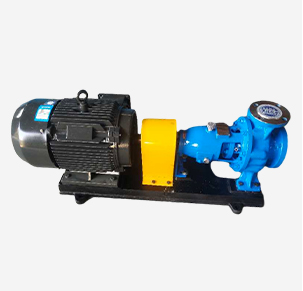Galician
- Afrikaans
- Albanian
- Amharic
- Arabic
- Armenian
- Azerbaijani
- Basque
- Belarusian
- Bengali
- Bosnian
- Bulgarian
- Catalan
- Cebuano
- Corsican
- Croatian
- Czech
- Danish
- Dutch
- English
- Esperanto
- Estonian
- Finnish
- French
- Frisian
- Galician
- Georgian
- German
- Greek
- Gujarati
- Haitian Creole
- hausa
- hawaiian
- Hebrew
- Hindi
- Miao
- Hungarian
- Icelandic
- igbo
- Indonesian
- irish
- Italian
- Japanese
- Javanese
- Kannada
- kazakh
- Khmer
- Rwandese
- Korean
- Kurdish
- Kyrgyz
- Lao
- Latin
- Latvian
- Lithuanian
- Luxembourgish
- Macedonian
- Malgashi
- Malay
- Malayalam
- Maltese
- Maori
- Marathi
- Mongolian
- Myanmar
- Nepali
- Norwegian
- Norwegian
- Occitan
- Pashto
- Persian
- Polish
- Portuguese
- Punjabi
- Romanian
- Russian
- Samoan
- Scottish Gaelic
- Serbian
- Sesotho
- Shona
- Sindhi
- Sinhala
- Slovak
- Slovenian
- Somali
- Spanish
- Sundanese
- Swahili
- Swedish
- Tagalog
- Tajik
- Tamil
- Tatar
- Telugu
- Thai
- Turkish
- Turkmen
- Ukrainian
- Urdu
- Uighur
- Uzbek
- Vietnamese
- Welsh
- Bantu
- Yiddish
- Yoruba
- Zulu
Telephone: +86 13120555503
Email: frank@cypump.com
Out . 10, 2024 19:16 Back to list
Pumps for Efficient Operation of Sewage Treatment Plants and Wastewater Management Systems
The Role of Pumps in Sewage Treatment Plants
Sewage treatment plants (STPs) play a vital role in maintaining public health and environmental sustainability. At the heart of these facilities lies a crucial component—pumps. Pumps are essential for transporting sewage through various stages of treatment, ensuring the efficient processing of wastewater and the protection of our waterways. This article examines the significance of pumps in sewage treatment plants, their types, and their operational mechanisms.
Importance of Pumps in Sewage Treatment
In a sewage treatment plant, the flow of wastewater needs to be carefully controlled and directed to various treatment processes, including screening, sedimentation, and biological treatment. Effective pumping systems are fundamental for this purpose, enabling the continuous movement of wastewater through the treatment cycle. Without reliable pumps, the entire treatment process could be disrupted, leading to untreated sewage being released into the environment.
Additionally, pumps help maintain the necessary hydraulic pressure required for the treatment processes, ensuring that each stage operates optimally. For example, during the aeration process, aerobic microorganisms break down organic matter, and adequate airflow and water movement, facilitated by pumps, are crucial for this biological activity to thrive.
Types of Pumps Used
Several types of pumps are commonly used in sewage treatment plants, each serving a specific function. The most prevalent are centrifugal pumps and positive displacement pumps.
sewage treatment plant pumps

1. Centrifugal Pumps These are widely used due to their ability to handle large volumes of water efficiently. They impart kinetic energy to the sewage through a rotating impeller, which converts the energy into pressure. Centrifugal pumps are ideal for transferring liquids that are not highly viscous, making them suitable for the initial stages of sewage transport.
2. Positive Displacement Pumps These pumps operate by trapping a fixed volume of sewage and forcing it through the discharge pipe. They are particularly useful for handling thick and viscous fluids, such as sludge. Positive displacement pumps are essential for transferring settled solids from sedimentation tanks for further processing.
Operational Mechanisms
The operation of pumps within sewage treatment plants requires careful monitoring and maintenance to ensure reliability. Pump performance can be affected by various factors, including wear and tear, blockages, and changes in the composition of sewage. Regular maintenance activities, such as inspection, cleaning, and replacement of worn parts, are necessary to minimize breakdowns and maintain efficiency.
Additionally, modern advancements have led to the implementation of automation and control systems in STPs, allowing for real-time monitoring of pump performance. These systems can automatically adjust pump speeds and operations based on the flow rates and levels of sewage, optimizing energy consumption and improving treatment effectiveness.
Conclusion
In summary, pumps are a critical component of sewage treatment plants, facilitating the movement and treatment of wastewater. Their reliability and efficiency directly impact the effectiveness of the treatment process and the overall environmental health of communities. As technology continues to advance, the role of pumps in enhancing wastewater management practices will undoubtedly evolve, contributing to cleaner water systems and a healthier planet.
-
Reliable Non-Clog Sewage Pumps with GPT-4-Turbo Tech
NewsAug.04,2025
-
High-Performance Air Pumps for Sand & Gravel | Efficient Transport
NewsAug.03,2025
-
ISG Series Vertical Pipeline Pump - Chi Yuan Pumps Co., LTD.|Energy Efficiency, Corrosion Resistance
NewsAug.03,2025
-
ISG Series Pipeline Pump - Chi Yuan Pumps | Energy Efficiency&Compact Design
NewsAug.03,2025
-
ISG Series Vertical Pipeline Pump - Chi Yuan Pumps Co., LTD.|High Efficiency, Low Noise, Durable
NewsAug.02,2025
-
ISG Series Vertical Pipeline Pump - Chi Yuan Pumps | High Efficiency, Low Noise
NewsAug.02,2025










